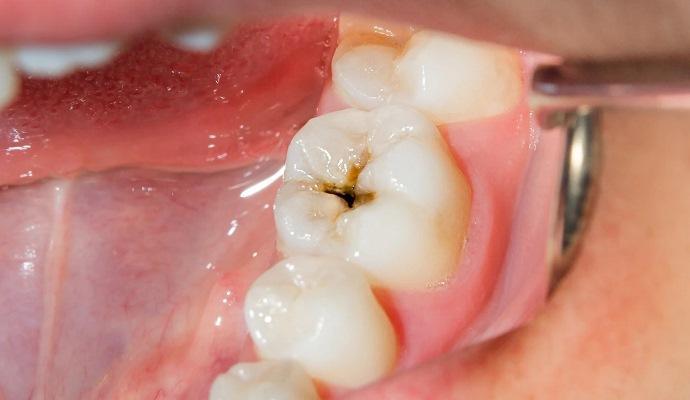According to research, selenium-containing dental sealants can inhibit the formation of cavities-causing bacteria on and under the sealed tooth, possibly opening up a new way to prevent cavities.

In an in vitro study, the organoselenium dental sealant prevented biofilm formation under the sealant, while the control sealant did not stop bacterial growth. In addition, the ability of the sealant with selenium to kill bacteria was long lasting.
“This modified selenium dental sealant effectively eliminates bacteria both on and under the dental sealant,” write the authors, led by Fat Tran, Ph.D., faculty member in the Department of Ophthalmology and Visual Sciences at the Texas Tech University Health Sciences Center at Lubbock.
Promising in vitro results
Selenium is a trace mineral found in a variety of proteins in bacterial and human cells called selenoproteins. Organoselenium compounds contain carbon-selenium chemical compounds that have been shown to be effective in killing certain types of bacteria. According to the study, the covalent attachment of low concentrations of organoselenium compound to biomaterials and medical devices, including contact lenses and intravenous catheters, effectively inhibits the growth of bacterial biofilms.
Recently, the same group conducted an in vitro study that showed that SeLECT-Defense selenium dental sealant (later renamed DenteShield, Elevate Oral Care) could completely inhibit the formation of key cariogenic strains of Streptococcus mutans and Streptococcus salivarius bacteria. However, since then, researchers have further extended the cure times of sealants to provide greater protection against these bacteria, as well as others such as Streptococcus sanguinis.
The authors hypothesized that the modified selenium dental material would allow the generation of superoxide radicals that reduce the growth of oral bacteria over and under sealants, offering a new approach to combat plaque formation.
To explore the potential for increased efficacy, the authors created pilot tooth sealing promotional discs consisting of glycidyl methacrylate (GMA), triethylene glycol dimethacrylate (EGDMA), and a multifunctional monomer. A compound containing selenium has been added to some sealing discs. Both selenium discs and untreated discs have been exposed to common oral bacteria.
Dental sealants containing selenium at concentrations of 0.25% or greater killed S. salivarius, S. sanguinis, and S. mutans, either alone or in combination. Lower concentrations of selenium completely destroyed S. salivarius.
After 24 hours of exposure, the authors observed no bacterial growth under the selenium sealants using confocal microscopy. However, areas of bacterial growth that were not treated with selenium could be visualized under the sealants.
To determine the long-term ability of selenium sealant to kill bacteria, untreated discs and discs with selenium sealant were immersed in phosphate buffered saline for three months at 25°C (77°F), 37°C (98.6°F), and 57°C. (134.6°F). Incubating a disc at 57°C for three months is equivalent to incubating that disc at 37°C for a year.
After three months, selenium sealants containing 0.5% selenium killed all three bacteria at all incubation temperatures. This discovery showed that the antimicrobial properties of the sealants did not decrease over this period.
It is noteworthy that the study was conducted in vitro, so the results obtained may not lead to clinical use of the sealant. However, the sealant continued to highlight its potential benefits as a cost-effective antimicrobial agent.
“SeLECT-Defense organic selenium sealant can be an effective and durable method of protecting teeth from bacterial biofilms,” the authors of the study concluded.
